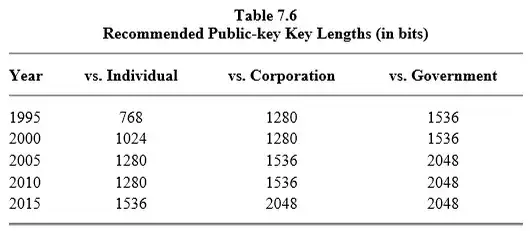There are a few reasons to use larger keys.
Your quote only mentions brute-force attacks against symmetric keys. If there is a weakness in the algorithm, then there are faster attacks than brute-force. That is a good reason to design algorithms with some safety margin such that it doesn't get broken as soon as somebody finds a little weakness in the algorithm.
Asymmetrical algorithms necessarily have a lot more structure than symmetrical algorithms. And that additional structure means larger keys to achieve same security level. In some cases that additional key size can be quantified very accurately. For example it is possible to build a signature scheme using a cryptographic hash as the only primitive. The key size needed to match the security of an underlying 256 bit cryptographic hash can be computed very precisely.
In other cases the relation between strength of asymmetrical vs. symmetrical algorithm is based on estimates computed from best known attacks. You can't directly compare the security of a certain key size for RSA to a certain output length of a SHA2 hash. But you can compute how much computing power each would take to break given the most efficient published attacks.
Additionally there is quantum computing to keep in mind. Our current understanding of quantum computing suggests that for symmetric keys you need to double the key size in order for them to remain secure if quantum computing becomes a reality. I do not know whether the 256 bit figure is supposed to be before or after this doubling.
